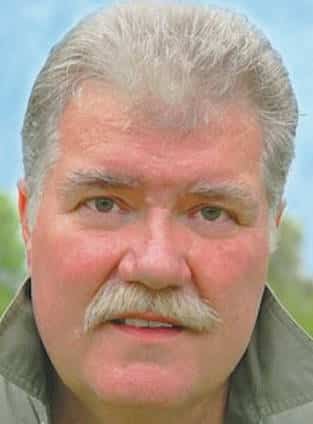
July has come to its final week. Summer’s first full month will soon slip quietly away, like the last grains of sand trickling from an hourglass.
We still have August, of course. But already the season is giving way to change as the sun continues its daily southward retreat.
A friend who gets up early in order to take her dog on a long walk before leaving for work, has recently started bemoaning the later dawns. And rightly so —because since the first of the month, she’s lost nearly half an hour of early light.
Dawns are quieter, too, since the birds have quelled their spirited amatory singing. Even territorial proclamations have diminished considerably
One bird whose boisterous voice has not been affected is the Carolina wren. I’ve never been quite sure why, but these boisterous songsters gather in droves in my yard, especially around the woodpile. Maybe they know how much I delight in their company. Carolina wrens possess a huge voice which bubbles and sputters in loud and effervescent rills— perfectly matching the little bird’s energetic personality as inquisitive, truculent spitfire.
Still, most other birds have dampened their vocalizing. However, the insects have happily taken up the slack. Late summer’s voice is always more insectile than avian.
Cicadas shrill mechanically during the day—though nothing like those screeching hordes of periodicals we endured earlier. During the quieter moments, there’s a background whir and flutter and buzz that serves to remind us where we are along the seasonal path.
But the real chorus begins with twilight when those longlegged, rasp-winged fiddlers come into their own.
Black field crickets begin their chirping late in the afternoon and continue throughout the gathering dusk. As darkness steals softly across the land they’ll be joined by pale green tree crickets, chiming in with their loud, synchronized trills—strident, insistent, as as much annoying noise as nocturnal song.
Later still—perhaps a week or two from now—we’ll also hear the unmistakable fiddling of a katydid, that pale-green hunchbacked cousin of the grasshopper. For those of us who follow country proverbs, the sound of the summer’s first katydid will trigger a small epiphany.
Tradition says the first frost will occur six weeks after the first katydid is heard. Whether this bit of rustic wisdom is genuine prophecy, or simply another case of quaint bucolic folklore, the fact remains the katydid’s clock indeed marks summer’s passage.
You can doubt its accuracy, but you can’t argue with its honesty.
Still, I hope such foretelling events take their time about implementation. I’m in no hurry to increase the pace. But in the nature of full disclosure, perhaps I should mention finding a big green katydid clinging to my refrigerator door this past week. How it found its way into the house, and why it decided to reside in the kitchen remains a mystery. A big lime green bug on a white refrigerator door is definitely not hidden! At least it didn’t cut loose singing!
Regardless, the natural cycle will continue, as it always does, at its own steady pace. Better to enjoy the here and now and allow the future to arrive when it will.
I’m willing to count my own small blessings. For example, by this point during a normal Buckeye summer, most area streams would typically be low and clear, mere shadows of their April selves.
But this July has been unusual in the way frequent rains—some might say too frequent—throughout the month. Local small creeks and brooks have water aplenty. On larger rivers, high-water conditions have regularly been as frustrating as the flood-prone days of spring—at least for us smallmouth fishermen who prefer wading.
But what may have proven a nuisance for stream angling has delivered an incredible boost to landscape growth. Vegetation everywhere is verdant—thick and lush, in places a near-impenetrable jungle.
My backyard lawn and perennial plantings demand constant clipping and pruning. I’ve mown the grass sometimes twice weekly. The fenceline rambler roses are sending off shoots which snare me every time I pass too close. And the lilies look amazing!
Weeds also sprout and grow like, well, weeds. I’ve found it necessary to perform weekly underbrush choppings on the overgrown honeysuckle and their ilk or risk being inundated by the tangles.
An unkempt field down the road is equally exuberant. Rampant stands of higher-than your-head horseweeds blanket one corner. Flourishing blooms include froths of Queen Anne’s lace, the starlight wink of blue chicory, pale-purple teasel, delicate daisy fleabane, and beerich red clover. Soon their ranks will be joined by prickly burdock and field thistle, magenta Joe Pye weed, lovely purple ironweed, perhaps great lobelia and blue vervain.
The gleaming waves of shining goldenrod can’t be far behind. Then will come the royal purple asters—summer’s magnificent completion and a fitting climax to the season.
Thankfully, that’s still beyond tomorrow’s horizon. Everything to its season. July wanes…but summer flows steadily on.


